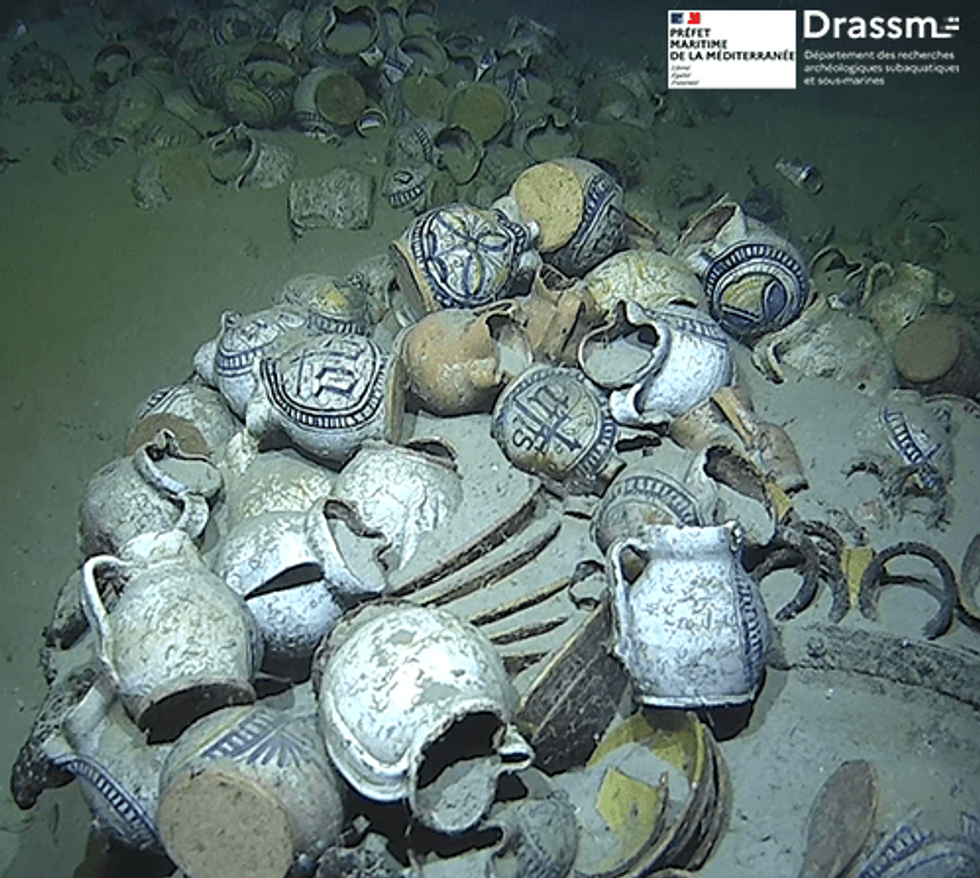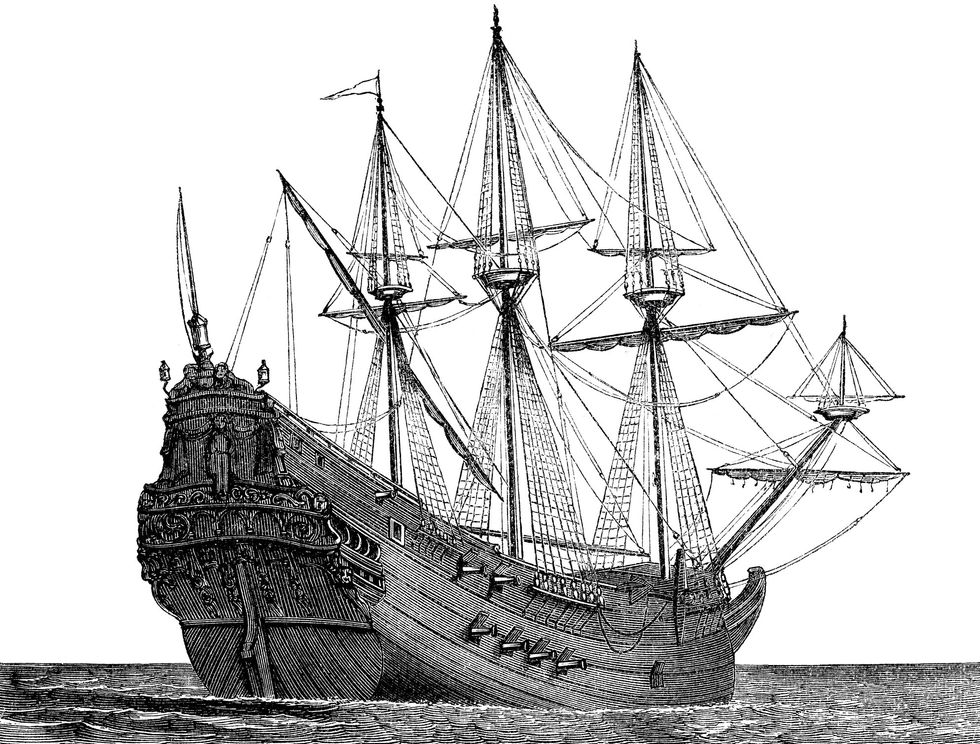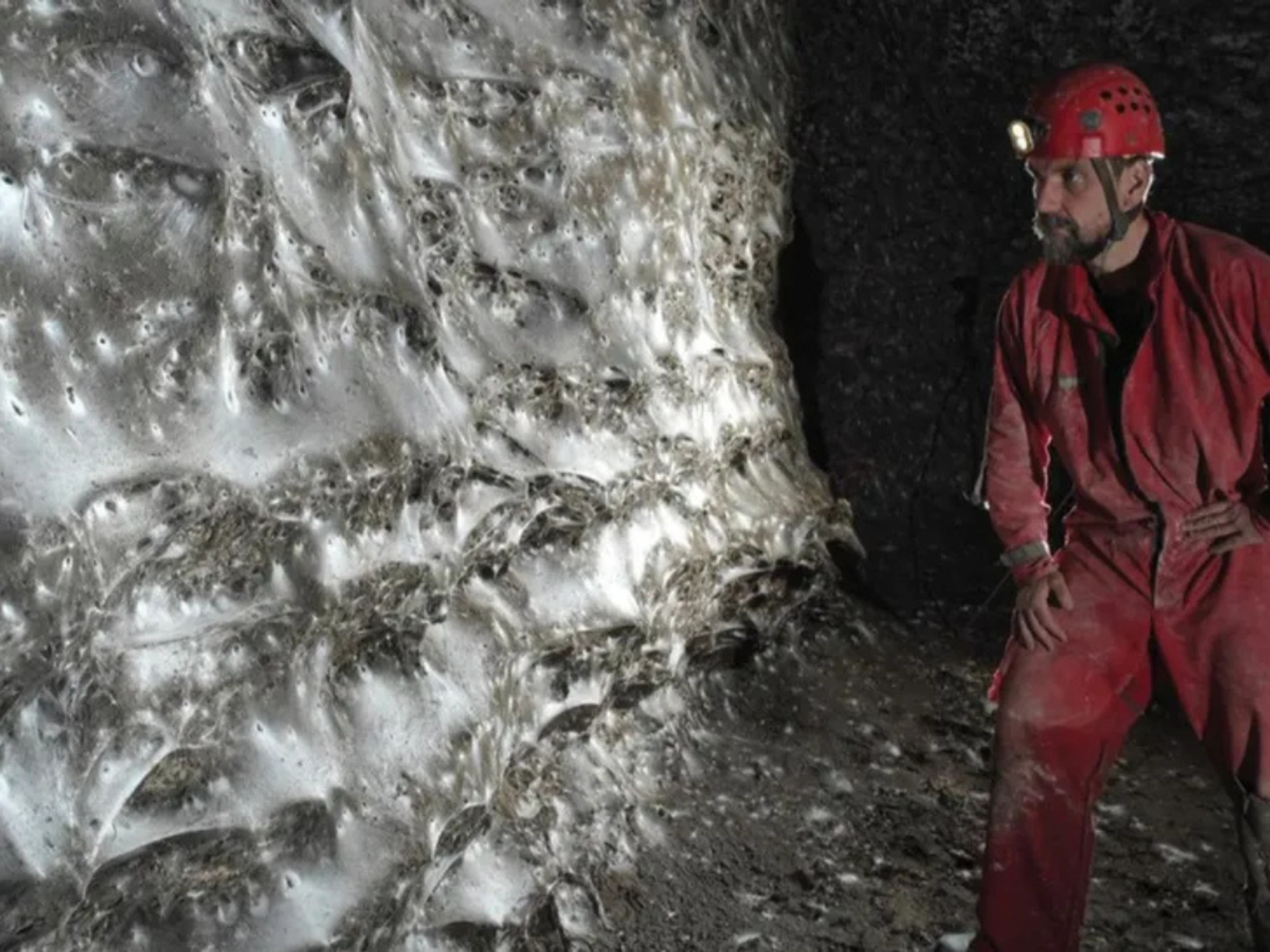Archaeologists use undersea drones to uncover Frances's 'deepest shipwreck'
Photographs of the shipwreck helped identify specific pieces of the ship
Don't Miss
Most Read
Latest
French archaeologists have located a merchant ship from the 1500s in waters off Ramatuelle, establishing a new record for the nation's deepest maritime archaeological find at more than 2.5kilometres (1.55miles) below the surface.
The vessel holds approximately 200 clay vessels originating from Liguria in northern Italy, decorated with sacred inscriptions, including "IHS," which represents the initial letters of Christ's name in Greek, alongside geometric patterns.
It also yielded 100 plates, ship's anchors and cooking pots, with all items showing exceptional preservation in the Mediterranean's extreme depths, where conditions have remained unchanged since the 16th century.
The French navy initially identified the location during routine seafloor mapping operations in March, discovering an uncharted anomaly near Ramatuelle's coastline.

The discovery uncovered pots and plates
|Préfecture Maritime de la Méditerranée
Naval personnel deployed unmanned submersibles to investigate what they designated as the Camarat Four site, followed by a remotely controlled vehicle that recorded comprehensive footage and photographs of the discovery.
"The quality of the images obtained makes it possible to detail this merchandise," stated the French culture ministry's underwater archaeology department.
The advanced underwater technology enabled researchers to examine the wreckage without disturbing its position, revealing cargo that appeared to be commercial ceramics from the 1500s.
Arnaud Schaumasse, who leads the underwater archaeology department, confirmed: "It is the deepest shipwreck ever found in French territorial waters."
LATEST DEVELOPMENTS
The submersible footage documented roughly 200 terracotta jugs buried beneath marine deposits, many displaying the "IHS" monogram and decorative geometric designs that experts believe indicate Ligurian craftsmanship from the 1500s.
Approximately 100 ceramic dishes were recorded alongside the pottery collection, together with multiple ship's anchors and a pair of large cooking vessels.
"In these abysses, time stopped during the 16th century," the archaeology department noted, explaining how the extreme depth shields the artefacts from deterioration and human interference.
Scientists plan to develop a three-dimensional digital reconstruction of the vessel whilst collecting material samples to expand knowledge about 16th-century Mediterranean shipping routes.

The ship was a merchant ship in the 1500s
|GETTY
"Exploration of the surroundings of the site and samples of furniture are the first perspectives of studies, which will be carried out with the help of a college of experts, archaeologists, ceramologists, specialists in naval architecture, anchors, artillery, material culture, restorer, and conservator," the culture ministry announced.
It added: "This site will thus be able to integrate the 16th century wreck corpus, already rich in the Provence-Alpes-Côte d'Azur region."
A metal detectorist has also unearthed what experts believe to be the oldest Anglo-Saxon coin from East Anglia in a field near Norwich.
The tiny gold coin is believed to date from around AD640 to 660.











